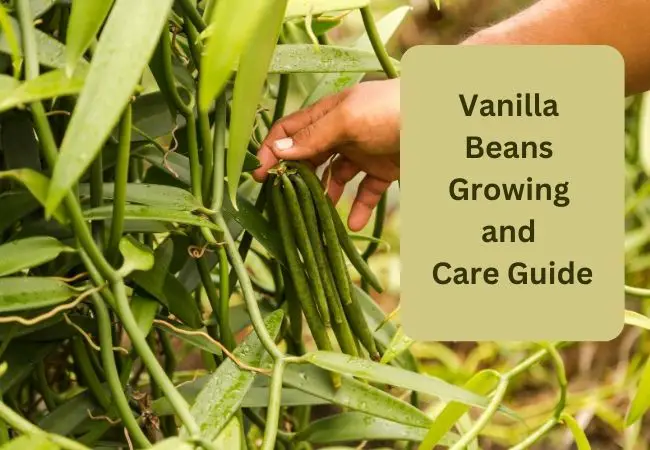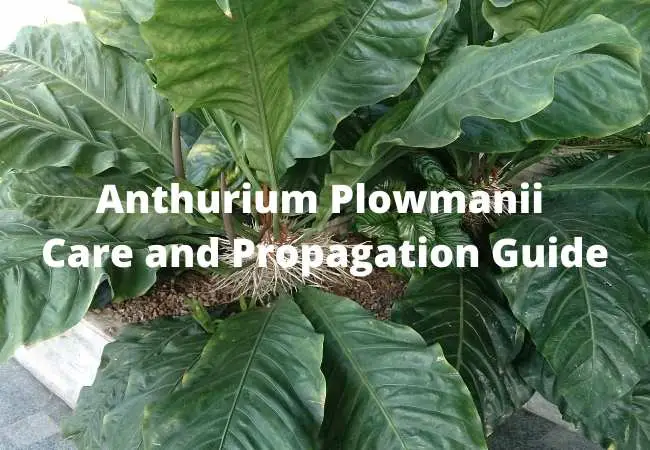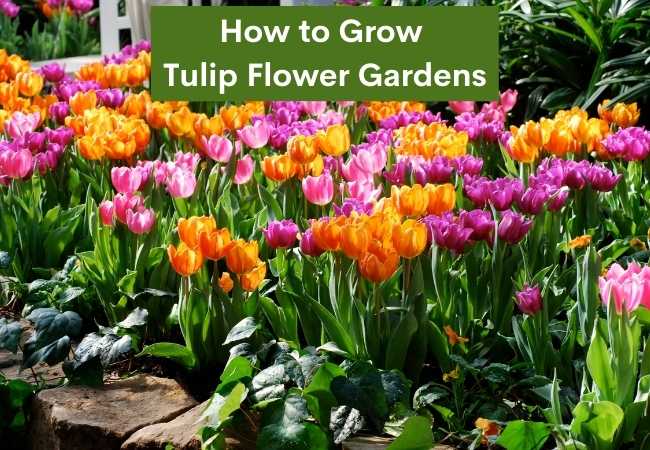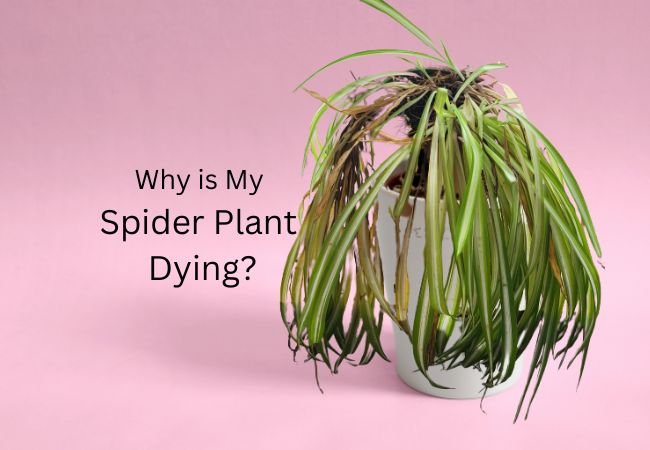Vanilla Beans Growing and Care Guide

This is the complete vanilla beans growing and care guide to producing vanilla beans in your garden. Vanilla beans are highly sought-after for their exquisite flavor and aroma, making them a prized ingredient in various culinary delights.
Vanilla Beans Growing and Care Guide
While they are often associated with distant tropical regions, cultivating vanilla beans in your own garden is entirely possible with proper care and attention.
In this comprehensive guide, I aim to provide you with a detailed understanding of the different vanilla bean varieties, optimal cultivation practices, and effective harvesting techniques.
Although I have successfully grown vanilla beans in the past after several tries, I have to admit it’s not a crop I grow anymore.
Understanding Vanilla Beans
Vanilla beans have a rich history and trace their origins to tropical regions such as Madagascar, Tahiti, and Mexico. These beans are the fruit of orchid plants from the Vanilla genus.
Vanilla orchids are perennial climbers characterized by long, slender vines that require suitable growing conditions for successful cultivation.
If you decide to grow vanilla beans it’s good to understand the unique characteristics, flavor profiles, and growth requirements of the different varieties to maximize their potential.
Selecting the Right Vanilla Bean Variety
When embarking on your vanilla bean cultivation journey, selecting the appropriate variety is crucial. Three popular varieties are Bourbon, Tahitian, and Mexican vanilla beans.
- Bourbon vanilla beans, primarily from Madagascar, are known for their classic, rich flavor.
- Tahitian vanilla beans offer a more delicate and fruity flavor profile.
- Mexican vanilla beans provide a distinct, spicy taste.
Consider factors such as climate, availability, and personal preference when choosing the variety best suited to your needs.
Preparing the Growing Environment
Creating an ideal growing environment is paramount for the successful cultivation of vanilla beans.
These plants require a location with ample sunlight, typically 4 to 6 hours of direct sunlight per day, while also providing partial shade to protect them from intense heat.
Vanilla orchids thrive in well-drained soil rich in organic matter, with a slightly acidic pH level ranging from 5.5 to 7.0.
Adequate temperature and humidity levels are also critical, with temperatures ranging from 70°F to 95°F (21°C to 35°C) and humidity around 80%.
Most gardeners have to grow vanilla beans in greenhouses because the zones they are gardening in cannot meet these requirements.
Propagation and Planting of Vanilla Beans
Obtaining healthy vanilla bean cuttings or plants is the first step in establishing your vanilla garden. Vanilla orchids can be propagated through stem cuttings or by purchasing pre-rooted plants.
Cuttings should be prepared by removing excess leaves and ensuring they have at least three nodes, which are the sections from which roots and shoots emerge.
The cuttings are typically rooted in a suitable medium, such as a mixture of peat moss and perlite or a sterile potting mix.
Once the cuttings have been rooted, they can be planted in larger containers or directly in the ground.
Spacing recommendations vary, but a general guideline is to provide each plant with 6 to 8 feet (1.8 to 2.4 meters) of space to allow for optimal growth.
Vanilla Bean Care and Maintenance
To ensure healthy growth and optimal yield, vanilla bean plants require consistent care and maintenance.
Proper watering is crucial, with a balance between avoiding overwatering and preventing drought stress. Regularly monitor soil moisture levels and water the plants when the top inch of soil feels dry.
Fertilization is essential to provide the necessary nutrients. Use a balanced, slow-release fertilizer specifically formulated for orchids and follow the recommended application rates.
Monitoring for pests and diseases is vital, with common threats including scale insects, mealybugs, and fungal infections. Implement appropriate control measures promptly to protect the plants.
Pruning and training the vines are also important to maintain a well-structured plant and promote better airflow and light penetration.
Pollinating Vanilla Beans and Flowering
Vanilla orchids have a unique pollination process that relies on external assistance for a successful fruit set. In nature, this task is performed by specific bees and hummingbirds.
However commercial vanilla cultivation often requires manual pollination techniques. Understanding the natural pollination process is essential to replicate it effectively.
Vanilla orchids produce intricate flowers that open for only a few hours, requiring timely intervention. Hand pollination involves transferring pollen from the male (stamen) to the female (stigma) parts of the flower using a small instrument or toothpick.
This process should be performed during the short window of time when the flower is receptive to ensure successful fruit development.
Vanilla Bean Harvesting and Post-Harvest Processing
Harvesting vanilla beans at the optimal stage of maturity is crucial to achieve the desired flavor and aroma. Harvesting too early or too late can result in subpar beans.
Key indicators of ripeness include the beans turning yellow, a slight split at the end, and a strong vanilla scent.
Harvesting techniques involve carefully handpicking the mature beans and handling them with care to avoid damage.
Once harvested, the beans undergo a series of post-harvest processing steps to enhance their flavor and prepare them for market or personal use.
This includes blanching, fermenting, and drying the beans over several weeks. Proper storage in airtight containers is necessary to preserve the beans’ quality and prevent moisture absorption.
Troubleshooting Common Issues
While growing vanilla beans can be rewarding, various challenges may arise. Nutritional deficiencies can manifest as yellowing leaves or stunted growth and can be remedied through balanced fertilization.
Pests such as scale insects and mealybugs can be controlled through organic or chemical insecticides.
Fungal infections, such as black rot or root rot, can be managed by ensuring proper ventilation, adequate spacing, and well-drained soil.
Environmental stressors like extreme temperatures or humidity fluctuations can also impact plant health and require appropriate mitigation strategies.
Final Thoughts on Growing Vanilla Beans
Growing vanilla beans can be a rewarding endeavor that allows you to experience the delight of cultivating and harvesting these precious beans in your own garden.
For me mastering the unique characteristics and requirements of vanilla bean varieties was doable. However, the pollination and the post-harvest processing procedures were not for me.
I stopped growing my own vanilla beans, but still enjoy the fragrant and flavorful rewards they bring to my culinary creations.
I hope this post on vanilla beans growing and care guide was informative and will be helpful as you embark on the journey to grow your vanilla beans. If you love gardening, please follow me on Multigardening Pinterest for more awesome gardening posts.






